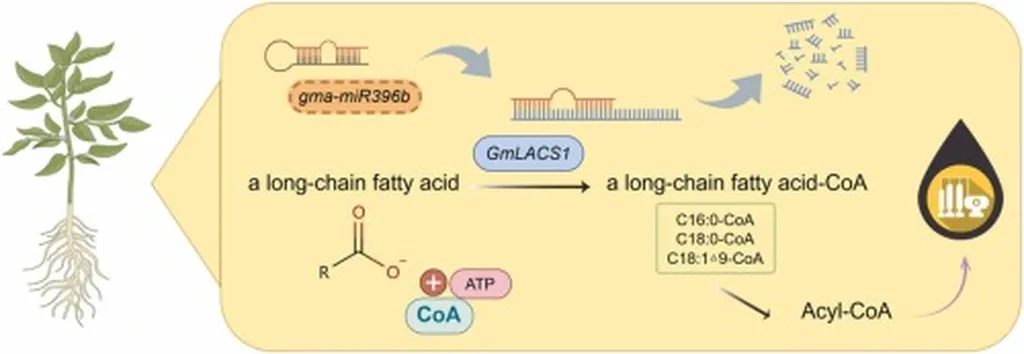In the ever-evolving landscape of agricultural biotechnology, a recent study published in *Industrial Crops and Products* has shed new light on the intricate world of soybean lipid metabolism. Led by Aijing Zhang from the College of Life Science and College of Agronomy at Jilin Agricultural University, the research delves into the role of microRNAs (miRNAs) in soybean lipid synthesis, offering promising insights for the agriculture sector.
Soybean, a globally important crop, is a staple in food processing, feed production, and various industrial applications. The study focuses on the soybean cultivar ‘JN18’ and its low linolenic acid mutant ‘MT72’, examining their lipid synthesis processes at critical stages of seed development. By employing whole-transcriptome sequencing, the researchers identified miRNAs involved in lipid synthesis and constructed miRNA-mRNA networks, providing a comprehensive view of the molecular interactions at play.
One of the key findings of the study is the significant impact of gma-miR396b on lipid metabolism. Overexpression of this particular miRNA led to a notable reduction in oleic acid content and total hydrolyzed amino acids in the seeds. This discovery opens up new avenues for manipulating lipid composition in soybeans, which could have profound implications for the agriculture industry.
“The interaction between gma-miR396b and GmLACS1 was validated through rapid amplification of cDNA ends and β-glucuronidase (GUS) histochemical staining assays,” explains Zhang. “Our results provide a new perspective on the molecular network of soybean lipid metabolism, which could be instrumental in enhancing the nutritional value and industrial applications of soybean products.”
The commercial impacts of this research are substantial. By understanding and manipulating the miRNA-mRNA networks involved in lipid synthesis, agricultural biotechnologists can develop soybean varieties with optimized lipid profiles. This could lead to improved oil quality and yield, benefiting both the food and industrial sectors. Additionally, the insights gained from this study could extend to other oilseed crops, further broadening the scope of agricultural innovation.
As the agriculture sector continues to evolve, the integration of advanced biotechnological tools and techniques will be crucial in meeting the growing demand for sustainable and high-quality agricultural products. This research by Zhang and colleagues represents a significant step forward in this direction, offering a deeper understanding of the molecular mechanisms underlying lipid metabolism in soybeans.
In the words of Zhang, “This study not only advances our knowledge of soybean lipid metabolism but also paves the way for future developments in crop improvement and agricultural biotechnology.” As we look to the future, the potential applications of this research are vast, promising to shape the next generation of agricultural innovations.

